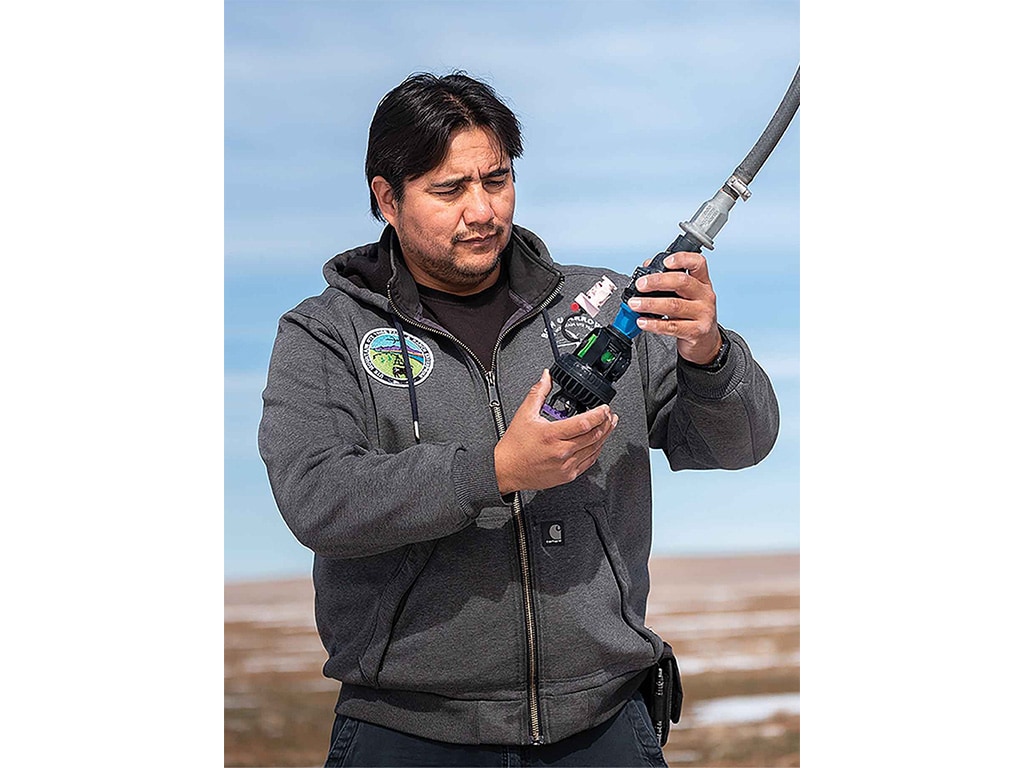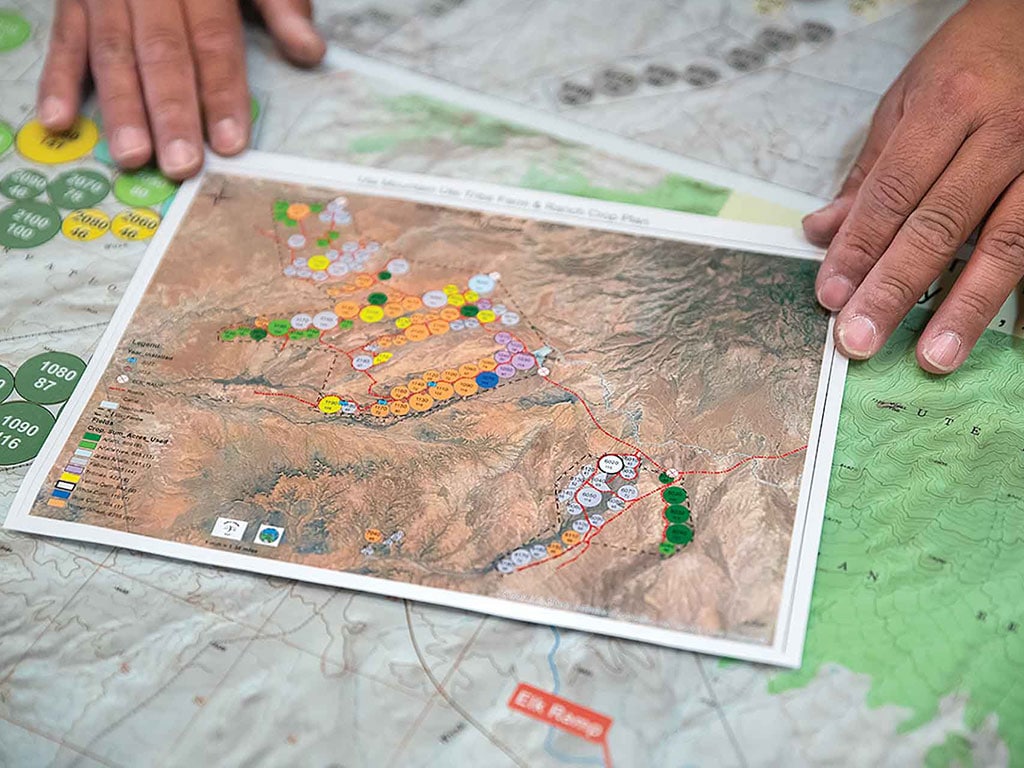Agriculture, Sustainability March 01, 2024
Water Reservations
.
Tribe works to get enough water to their farm and ranch land.
Farming in the arid southwest means you think about water—or lack thereof—an awful lot.
How much has it snowed? How will it melt this spring? How much will make it into the reservoir? How much of our annual allotment will we receive?
"It keeps me up—emotionally and physically," says Michael Vicenti, Ute Farm and Ranch irrigation manager and member of the Ute Mountain Ute tribe located in the southwest corner of Colorado.
"I'm the one who keeps everything alive," he says, the weight on his shoulders noticeable in his voice. He says he worries about the snow all winter and then how each pivot is working during the growing season. "We are making a small difference through our farm, and I have a responsibility to keep it going."
The farm has more than 100 center pivots across 7,700 arable acres. They grow alfalfa, wheat, and triticale for livestock feed and yellow, white, and blue corn, which they process at their on-site mill and sell under the Bow and Arrow brand. They also raise about 700 head of beef cattle, which graze some of their fields in the winter and the nearby mountains in the summer.
So much of what the 2,000 tribal members do under the Sleeping Ute Mountain southwest of Cortez, Colorado, is generations old tradition, but managing their water resources is not. They have only had irrigation water on the reservation since the early 1990s.
Before being limited to the reservation's marginal land a century before, the tribe had migrated around the region as the seasons and weather changed following available resources to provide for themselves.
It took decades of negotiations and lobbying by previous generations with the federal and local authorities to all agree the Ute Mountain Ute tribal members deserved access to irrigation water.
After the McPhee Reservoir was built in the 1980s off the Dolores River, a 40-mile canal was built to the reservation to provide ample and dependable water to grow a variety of crops and raise livestock.
Above. Irrigation manager Michael Vicenti checks nozzles on the 100+ center pivots and reviews the crop plan to ensure everything is ready to go when the water flows again.
Not enough. Since 2000, the tribal area has been in one of the five levels of drought (abnormally dry to exceptional drought) part of each year. According to the U.S. Drought Monitor, last summer, following the record snowfall, was the first time the area was not in drought since the spring of 2017.
In the years in between, the reservoir was only a quarter to half full, meaning the reservation only received a fraction of their allotted water.
"Of course, I want everyone else to have their water, too." Vicenti knows the tribe is not the only one in need of more water. But, he says, it is not possible to keep everything growing as they have been when they only get 10% of the water they need.
"Every 20 years there is something happening here. The tree rings up in Mesa Verde show there is a cycle," Vicenti says. He has been working for the farm for 22 years and has lived on the reservation most of his life.
"I choose to be here, and I am proud that we have been able to produce a good yield of high-quality grain each season."
Stretching each drop. Ute Mountain Ute tribal members have been working every angle to best utilize every drop they receive, and they continue to learn from the problems they face to get through them more easily the next time.
One way they are trying to hedge against the water limitations is offsetting their electricity costs. They are testing micro hydropower plants on a portion of their center pivots, with partial funding from USDA and Colorado Department of Agricultural grants. If all are successful, the energy captured and put back onto an independent grid would be enough to power the mill and other farm buildings.
Being at the end of the line for the water also allows for some flexibility. "We use every drop of water we are given," Vicenti says. Some years they have water as early as the first of April and as late as the first of November. In years the water comes later in the season they adjust their crop plan to include more winter wheat.
They have also changed many of their water nozzles to reduce the flow and hopefully increase the crops' ability to better use each drop.
As this El Niño winter ends, Vicenti and the rest at Ute Farm and Ranch crew hope it is like others have been and brings additional snowfall through March. ‡
Read More

AGRICULTURE, SUSTAINABILITY
Conservation Sage
Al Schafbuch sees an increased need for conservation tillage and cover crops.

AGRICULTURE, FARM OPERATION
Starting from Scratch
Finding success with flowers.



